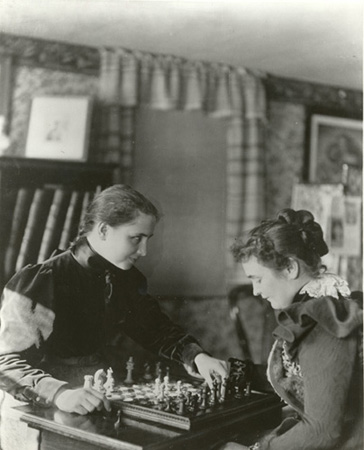Today, Monday June 27th, 2016—is Helen Keller’s 136th birthday. What better way to celebrate her legacy than by focusing our attention on the Helen Keller Digitization Project? As the result of a grant awarded in May 2015 by the National Endowment for the Humanities, the American Foundation for the Blind (AFB) began the task of capturing 80,000 items in the Helen Keller Archival Collection. Using digital photography, correspondence, photographs, architectural drawings, oversize print materials, artifacts, and film clips are being made fully accessible via the Internet to both sighted and non-sighted audiences around the world.
We are thrilled with the progress we have made! Over 164 manuscript boxes filled with documents have been photographed and over 24,000 digital images corresponding to over 9,600 items are now available on the website, along with their metadata at https://helenkeller.localarchives.net.
For every item that includes text (e.g., letters, newspaper clippings, speeches), a transcription appears beside it. When the text is typewritten, the computer can automatically generate transcriptions. However, it cannot decipher handwritten text, so these must be manually transcribed. To date, our three volunteer transcribers have transcribed or made text corrections to over 6,600 items, far surpassing our goal of 1,666 transcriptions/corrections by August 2016. Because transcription is proceeding so beautifully, and because it is such an important aspect of making digital images and the written knowledge they contain accessible to those who cannot see, it will be the focal topic of this and many of the posts that will appear over the next few weeks. Blogs will be contributed by both our transcribers and historians, and our hope is to inspire others to volunteer as transcribers and join our "Captains of Transcription" team.
For this blog post, I would like to draw attention to an area where the art of transcription is both tricky and highly relevant to a blind audience—photographic prints. Take a look at the image below:
A basic description of the image might appear on the back of the photograph as follows: Helen Keller and her teacher Anne Sullivan Macy playing chess at Radcliffe College, 1900. The sighted viewer can supply the information that gives historical context to the photograph such as the dresses they are wearing and the style of furniture around them, but what about the visually impaired viewer? An alternative description might be as follows:
In this picture, taken in 1900, Helen Keller and Anne Sullivan Macy are playing chess. Helen is about to move a white queen. She has already captured one of Anne’s black pawns, which is to the right of the board. Helen’s hair is pulled into a single braid, down her back. She is wearing a long, dark dress with a high collar and sleeves that puff out from the shoulder to the elbow. Anne’s hair is twisted into a large braid at the back of her head. She is wearing a dark dress with a white lace collar and dark ruffles around each shoulder. A screened window and a book shelf with large volumes are visible in the background.
The wonderful thing about such a detailed description is that it is both highly evocative and can provide careful analysis of the scene and its historical context to both non-sighted and sighted audiences alike. In the era of being bombarded with images on the Internet, a sighted viewer can benefit just as much from careful looking—albeit through a fabulous transcription—as a visually impaired viewer. A well-transcribed photographic print is a beautiful thing and is beneficial to everyone!
So, who wants to sign up and help with transcriptions?
